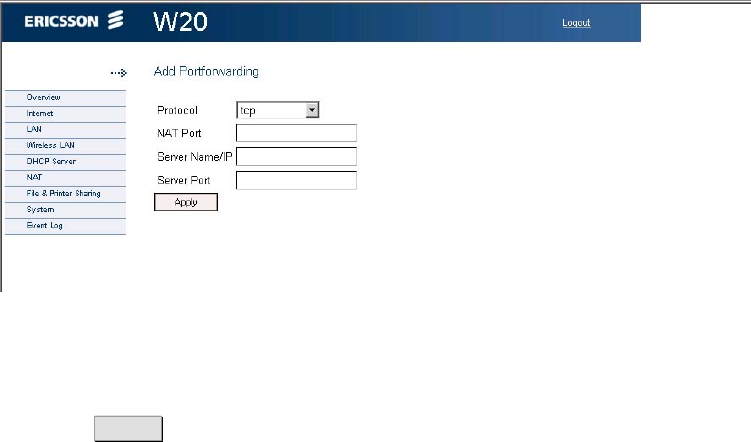
Configuration and Management
Figure 30 Add Port Forwarding page
Fill in the Protocol, NAT
Port, Server Name/IP, and Server Port fields
and click Apply .
Example
In the following example, port forwarding is used to allow incoming access
to an internal web server.
Protocol: TCP
NAT Port: 80
Server Name/IP: 192.168.1.101
Server Port: 8080
When one or more port forwarding instances are added, the following
details are displayed for each instance in the Port
Forwarding table on the
NAT page:
NAT
Port
The NAT port number that the data traffic is allowed
to be transported on.
The name or IP address of the destination unit.
Server
Name/IP
The destination port, which identifies the type of
service that is directed, for example web service on
port 8080.
Server
Port
The data traffic protocol; UDP or TCP.
Prot
1/1551-CRH 102 167 PA15 2006-08-16
33


















